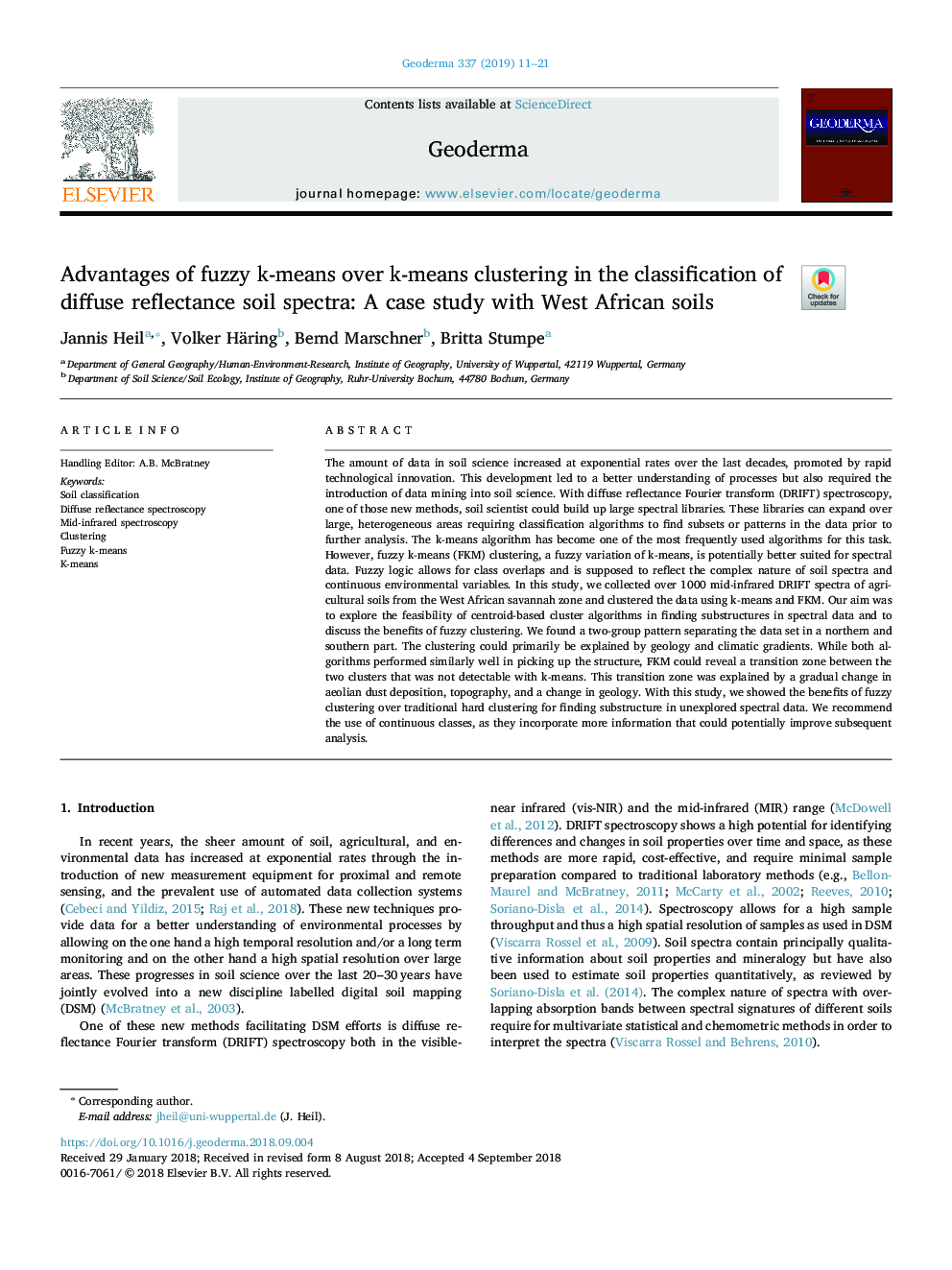| کد مقاله | کد نشریه | سال انتشار | مقاله انگلیسی | نسخه تمام متن |
|---|---|---|---|---|
| 10223984 | 1701069 | 2019 | 11 صفحه PDF | دانلود رایگان |
عنوان انگلیسی مقاله ISI
Advantages of fuzzy k-means over k-means clustering in the classification of diffuse reflectance soil spectra: A case study with West African soils
دانلود مقاله + سفارش ترجمه
دانلود مقاله ISI انگلیسی
رایگان برای ایرانیان
کلمات کلیدی
موضوعات مرتبط
مهندسی و علوم پایه
علوم زمین و سیارات
فرآیندهای سطح زمین
پیش نمایش صفحه اول مقاله

چکیده انگلیسی
The amount of data in soil science increased at exponential rates over the last decades, promoted by rapid technological innovation. This development led to a better understanding of processes but also required the introduction of data mining into soil science. With diffuse reflectance Fourier transform (DRIFT) spectroscopy, one of those new methods, soil scientist could build up large spectral libraries. These libraries can expand over large, heterogeneous areas requiring classification algorithms to find subsets or patterns in the data prior to further analysis. The k-means algorithm has become one of the most frequently used algorithms for this task. However, fuzzy k-means (FKM) clustering, a fuzzy variation of k-means, is potentially better suited for spectral data. Fuzzy logic allows for class overlaps and is supposed to reflect the complex nature of soil spectra and continuous environmental variables. In this study, we collected over 1000 mid-infrared DRIFT spectra of agricultural soils from the West African savannah zone and clustered the data using k-means and FKM. Our aim was to explore the feasibility of centroid-based cluster algorithms in finding substructures in spectral data and to discuss the benefits of fuzzy clustering. We found a two-group pattern separating the data set in a northern and southern part. The clustering could primarily be explained by geology and climatic gradients. While both algorithms performed similarly well in picking up the structure, FKM could reveal a transition zone between the two clusters that was not detectable with k-means. This transition zone was explained by a gradual change in aeolian dust deposition, topography, and a change in geology. With this study, we showed the benefits of fuzzy clustering over traditional hard clustering for finding substructure in unexplored spectral data. We recommend the use of continuous classes, as they incorporate more information that could potentially improve subsequent analysis.
ناشر
Database: Elsevier - ScienceDirect (ساینس دایرکت)
Journal: Geoderma - Volume 337, 1 March 2019, Pages 11-21
Journal: Geoderma - Volume 337, 1 March 2019, Pages 11-21
نویسندگان
Jannis Heil, Volker Häring, Bernd Marschner, Britta Stumpe,